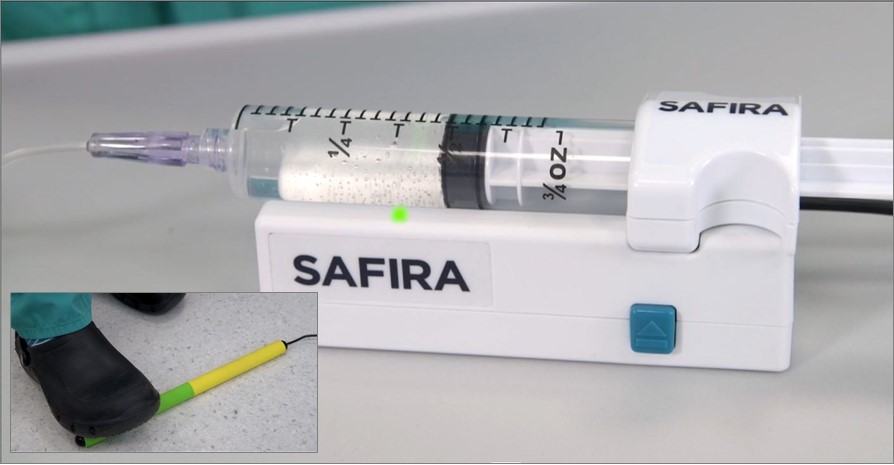When conducting a regional anesthesia procedure, the anesthesiologist works with a second trained operator who controls the injection of the anesthetic. A new device, SAFIRA™, has been designed to allow the anesthesiologist to be able to inject the anesthetic themselves, via a foot pedal, whilst still holding the ultrasound probe and positioning the needle. SAFIRA™ gives anesthesiologists control.
Injection at high pressures can cause transient or serious nerve damage in patients. During current regional anesthesia procedures, the anesthesiologist must communicate with a second operator to control the injection process. Manual injection pressure can be subjective and can therefore vary between individual operators.
In a study* involving a group of 30 experienced anesthesiologists from Europe and the US, participants were asked questions about the current regional anesthesia process. This included asking how comfortable they were that a second operator would apply a similar pressure level to themselves during anesthetic injection. Just one out of the 30 anesthetists in the study said they were confident a second operator would apply an appropriate pressure compared to the pressure they would apply.
A new device has been developed to help overcome part of the challenge of subjectivity during manual anesthetic injection.

Anesthesiologist applies pressure to the green end of the foot pedal operator to activate infusion of anesthetic when ready. Active infusion is indicated by the green light on SAFIRA™ driver unit.
SAFIRA™: SAFer Injection for Regional Anesthesia has been designed to be compact, intuitive to use and fit seamlessly into current practice. A syringe driver unit contains patented technology and enables injection and aspiration to be controlled via a connected foot pedal. A proprietary syringe can be securely seated on the driver once primed and filled. The anesthesiologist can then use an ultrasound system as normal to help visualise and position the needle. When ready, the anesthesiologist can control aspiration and injection via the foot pedal. The SAFIRA™ device is designed to stop injection before a pressure of 20psi, thereby helping to reduce the risk of nerve damage.
The SAFIRA™ driver unit and foot pedal operator can be used for approximately 200 procedures before they require replacement. SAFIRA syringes are single use sterile.
By using the intuitive SAFIRA™ technology to conduct a regional block, an anesthesiologist can have increased confidence that anesthetic is being injected at pressures which do not exceed 20psi, and that they are in full control of the procedure. This provides reassurance for both clinician and patient.
